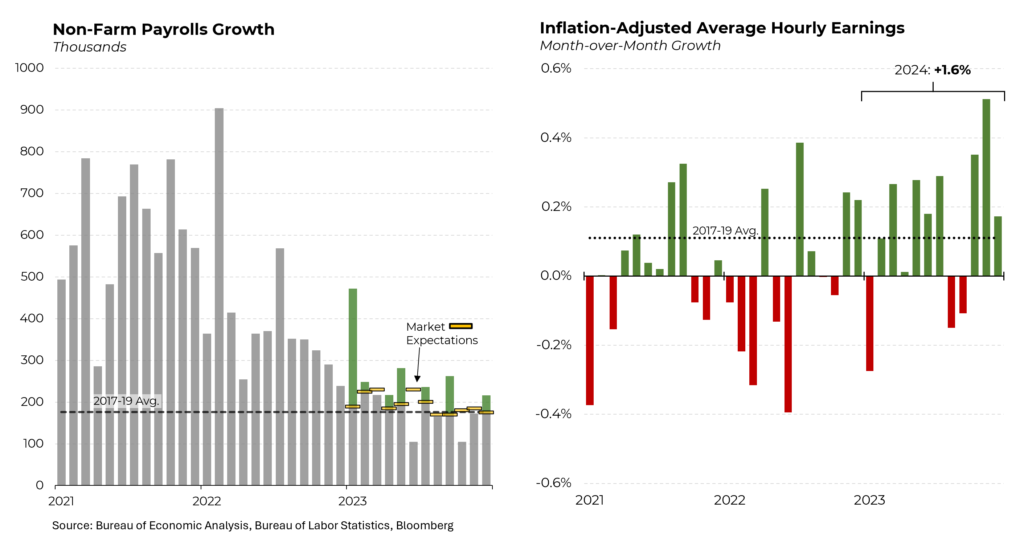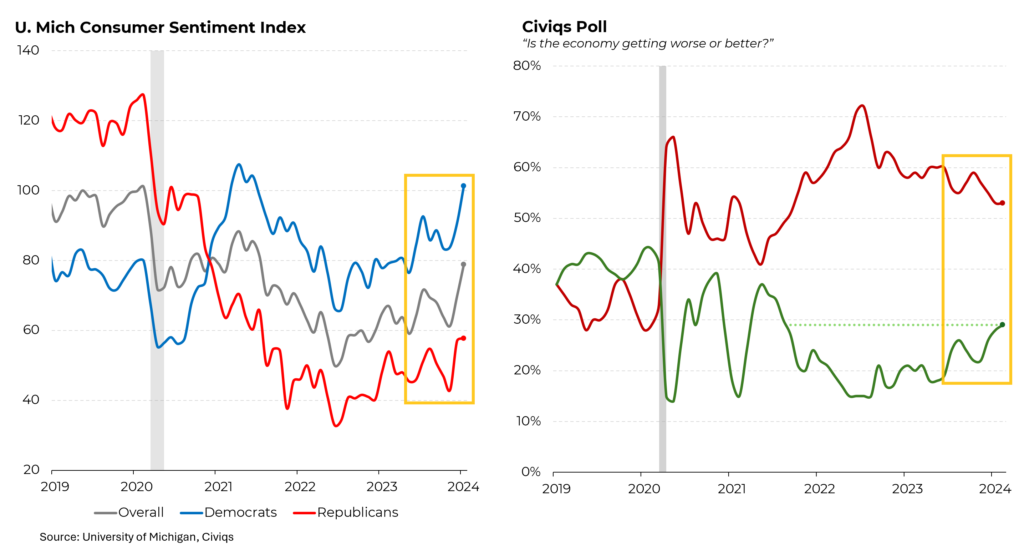A growing economy. More jobs. Abating inflation. A record stock market. A recent spate of economic data all points in one direction: an economy that continues to perform more strongly (and with less inflation) than many expected just a few months ago. While public perceptions often lag realities, all of this augurs well for President Biden as the general election campaign gets into full swing.
Let’s start with economic growth. The pain (and even recession) that many expected to accompany efforts by the Federal Reserve to wring inflation out of the economy has yet to materialize. The economy expanded at a 3.3% annual rate in the fourth quarter and by just over 3% for the year as a whole. That’s higher than 20 of the last 24 years and faster than any of the other major developed economy. And while growth is expected to slow down in 2024, note that the economy expanded faster in every quarter of 2023 than economists projected.
Surprisingly, even as the economy outpaced growth projections, inflation came down faster than anticipated. In the past two quarters, the central bank’s preferred inflation measure, which excludes the volatile categories of food and energy, rose at just a 2% annual rate, meeting the Fed’s inflation target. That’s a dramatic fall from the 6% core inflation rate in the second quarter of 2022. As a result, Fed watchers do not expect another interest rate increase when its governors meet on Wednesday; indeed, the market anticipates that the Fed could begin cutting rates as soon as May – more potential good news for Biden’s reelection hopes.

For most Americans, this strong performance means more jobs and growing wages. The economy added an average of 224,000 jobs a month in 2023, compared to a pre-pandemic average of 175,000 a month under President Trump (prior to the pandemic). In many months, the job additions exceeded expectations – in December, 216,000 jobs were added compared to the 175,000 that were expected. January’s figures will be announced on Friday – the consensus is for 183,000 additions. And at 3.8%, the unemployment rate remains below long-term averages.
While many Americans believe that they are losing ground to inflation, on average, that is not the case. For blue-collar and non-managerial workers, wages rose by 1.6% in 2023, which brings the total inflation-adjusted increase under President Biden to 2.1%. And importantly, those nearer the bottom have enjoyed faster wage increases than those at the top.

While polling data has consistently indicated widespread concerns about the state of the economy, even this may be changing. One of the most widely watched indicators of consumer sentiment (by the University of Michigan) has turned sharply higher and is almost back to where it was at the start of President Biden’s term. (Note that views among voters tend to reflect their political affiliations; Democrats have been far more positive on the economy since Biden’s arrival while the opposite was true during Trump’s tenure.)
As for polling data, this has also begun to show signs of improving. While a majority of Americans still believe the economy is getting worse, the percentage saying “better” is the highest since August 2021, as inflation began to accelerate.


